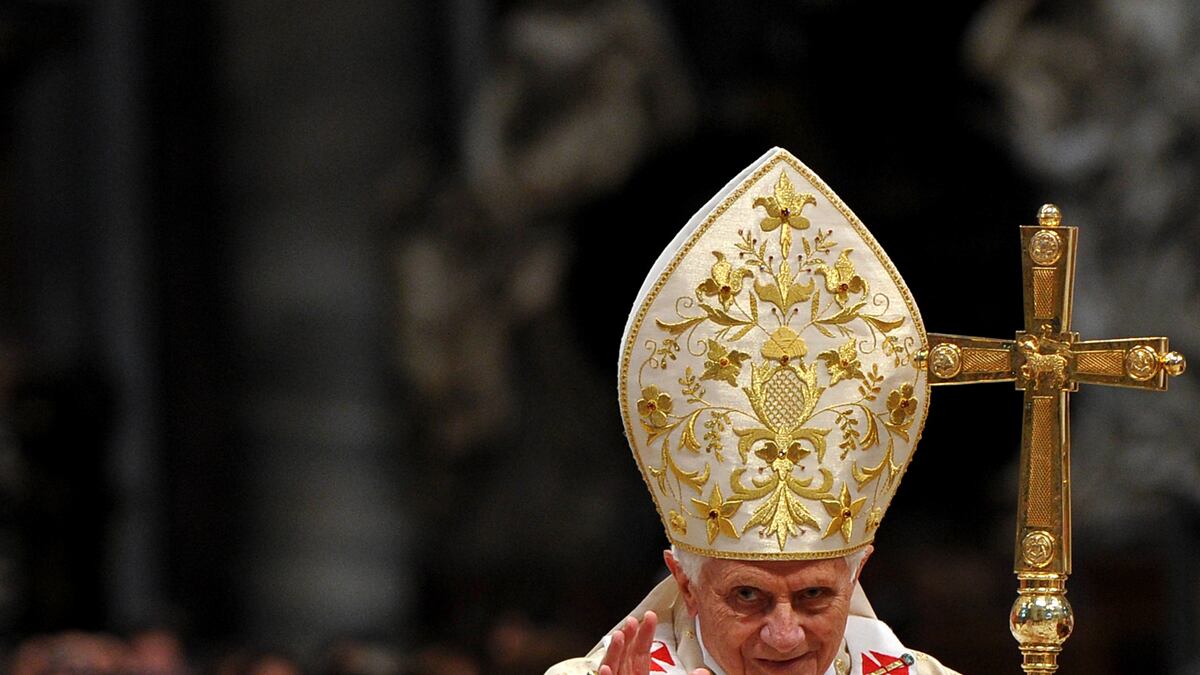The Vatican is in public-relations panic-mode ... again. But it’s not the pedophile priest scandal or Vatileaks that has the pope’s image-makers hopping. This time the Holy See faces serious allegations that its curious accounting practices are really a cover for a money-laundering scheme.
On March 30, the Milan branch of the global investment bank JPMorgan Chase will officially close the Vatican bank’s account No. 1365—held by the Institute for Works of Religion, or the IOR—on speculation that the account is being used for less-than-immaculate financial deeds. JPMorgan Chase sent a letter to the Vatican on Feb. 15 to notify them of the closure after the Vatican bankers were “unable to respond” to a series of requests about questionable money transfers from the account. The JPMorgan Chase account was a “sweeping facility” that was zeroed out at the end of each business day. The account, which was opened in 2009, had processed some $1.5 billion in funds to other Vatican accounts—mostly in Germany—during the short time it was open, according to financial documents published in Italy’s leading financial newspaper Il Sole 24 Ore. There is nothing illegal about the use of sweeping facilities, but in the case of the JPMorgan Chase account, the fact that Vatican bankers couldn’t quite explain the reason they moved so much money in such a short period of time led the bank to close the account. The closure is the product of an ongoing investigation into the Vatican’s alleged creative accounting that began in September 2010 when tax police in Rome froze $33 million in Vatican assets after a covert investigation raised eyebrows about the way the church moves its millions and keeps its accounting. The assets were eventually released in June 2011, but the investigation is ongoing.
The Vatican has not commented on the JPMorgan Chase fiasco, but revelations in the form of leaked letters between Vatican officials that emerged last winter seem to back up the notion that all is not sacrosanct with the Vatican coffers. In one leaked letter written by Cardinal Carlo Maria Viganò, who was hastily transferred to Washington, D.C., to head the Holy See embassy there earlier this year, outright talk of rampant corruption within the Holy See sent ripples around Rome. In the letter, which was written on Vatican letterhead and sealed with an official stamp, Vigano tried to persuade the pope to let him stay in Rome to continue his anti-fraud work. “Holy Father, my transfer at this time would provoke much disorientation and discouragement in those who have believed it was possible to clean up so many situations of corruption and abuse of power that have been rooted in the management of so many departments.”

The leaked letter scandal was quickly dubbed “Vatileaks” by the Vatican’s own spokesman. The Holy See did not deny the authenticity of the documents. Instead they opened an internal investigation into potential moles. So far, no one has been named as a source for the breach, but the document leaks have ceased for the moment.
During the height of Vatileaks earlier this year, the Vatican maintained it is doing what it can to prove that its records are clean. In late 2010 the pope christened an anti-corruption arm within the Roman Curia called the Financial Information Authority with an eye to securing a place on the international Financial Action Task Force’s coveted “white list” of states that adhere to the international standards in the fight against corruption, tax fraud, and money laundering. Placement on the list would have silenced the speculation that the Vatican was up to no good.
Despite the efforts to prove otherwise, the damage to the church’s financial reputation has already been done. Earlier this month, the U.S. State Department named the Holy See on a list of its own, as a “jurisdiction of concern” for money-laundering practices in its annual International Narcotics Control Strategy Report, alongside countries like Honduras and Syria. The Vatican shrugged off the State Department’s scolding and instead said being a “jurisdiction of concern” was far better than being a “primary concern.” But Reuters financial columnist Pierre Briançon disagrees. “The best way for the Vatican to come clean would of course be to close the bank: it’s hard to see why it’s needed other than to shroud the Church’s financial dealings in a veil of obsessive secrecy,” he wrote in a recent blog post. “Barring such a radical exorcism, a clean sweep is in order.”
This is not the first time the Vatican bank has been named in immoral activities. Three decades ago, the Holy See faced its first battle against allegations of money laundering and corruption, and it was named in the mysterious death of Roberto Calvi, known then as “God’s Banker.” Calvi was president of Banco Amborsiano despite being a Freemason with alleged mafia ties. The bank collapsed amid allegations of sinister activities, and Calvi was found hanging from a rope with bricks in his pockets under the Blackfriars Bridge in London. The Vatican was able to redeem its reputation back then—at least temporarily. Whether it will be able to save face this time may depend on divine intervention, or at least a better accountant.






